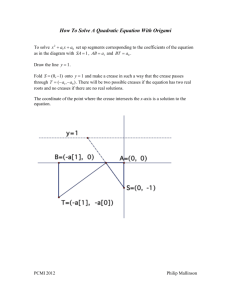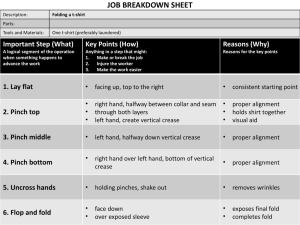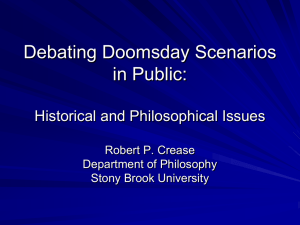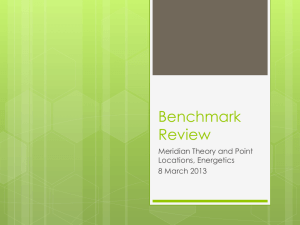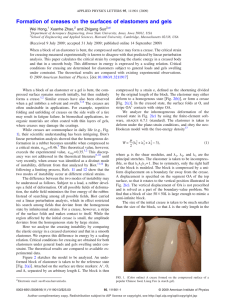ORIGAMI & MATHEMATICS Theorem: Every flatfoldable crease
advertisement
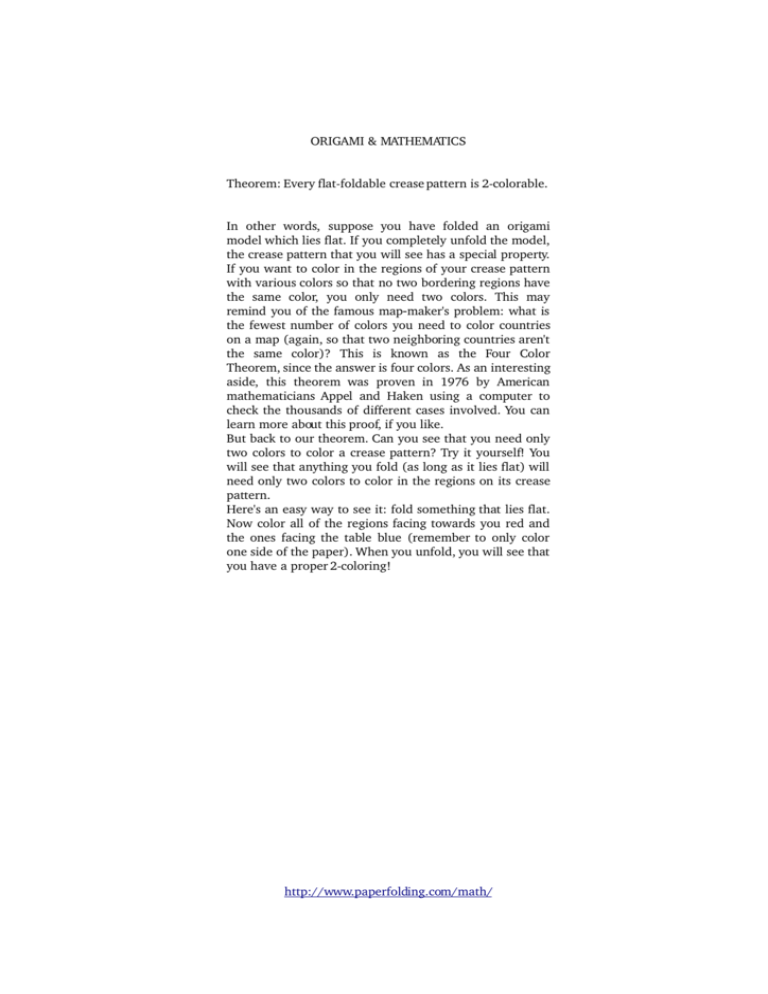
ORIGAMI & MATHEMATICS Theorem: Every flat­foldable crease pattern is 2­colorable. In other words, suppose you have folded an origami model which lies flat. If you completely unfold the model, the crease pattern that you will see has a special property. If you want to color in the regions of your crease pattern with various colors so that no two bordering regions have the same color, you only need two colors. This may remind you of the famous map‐maker's problem: what is the fewest number of colors you need to color countries on a map (again, so that two neighboring countries aren't the same color)? This is known as the Four Color Theorem, since the answer is four colors. As an interesting aside, this theorem was proven in 1976 by American mathematicians Appel and Haken using a computer to check the thousands of different cases involved. You can learn more about this proof, if you like. But back to our theorem. Can you see that you need only two colors to color a crease pattern? Try it yourself! You will see that anything you fold (as long as it lies flat) will need only two colors to color in the regions on its crease pattern. Here's an easy way to see it: fold something that lies flat. Now color all of the regions facing towards you red and the ones facing the table blue (remember to only color one side of the paper). When you unfold, you will see that you have a proper 2­coloring! http://www.paperfolding.com/math/
